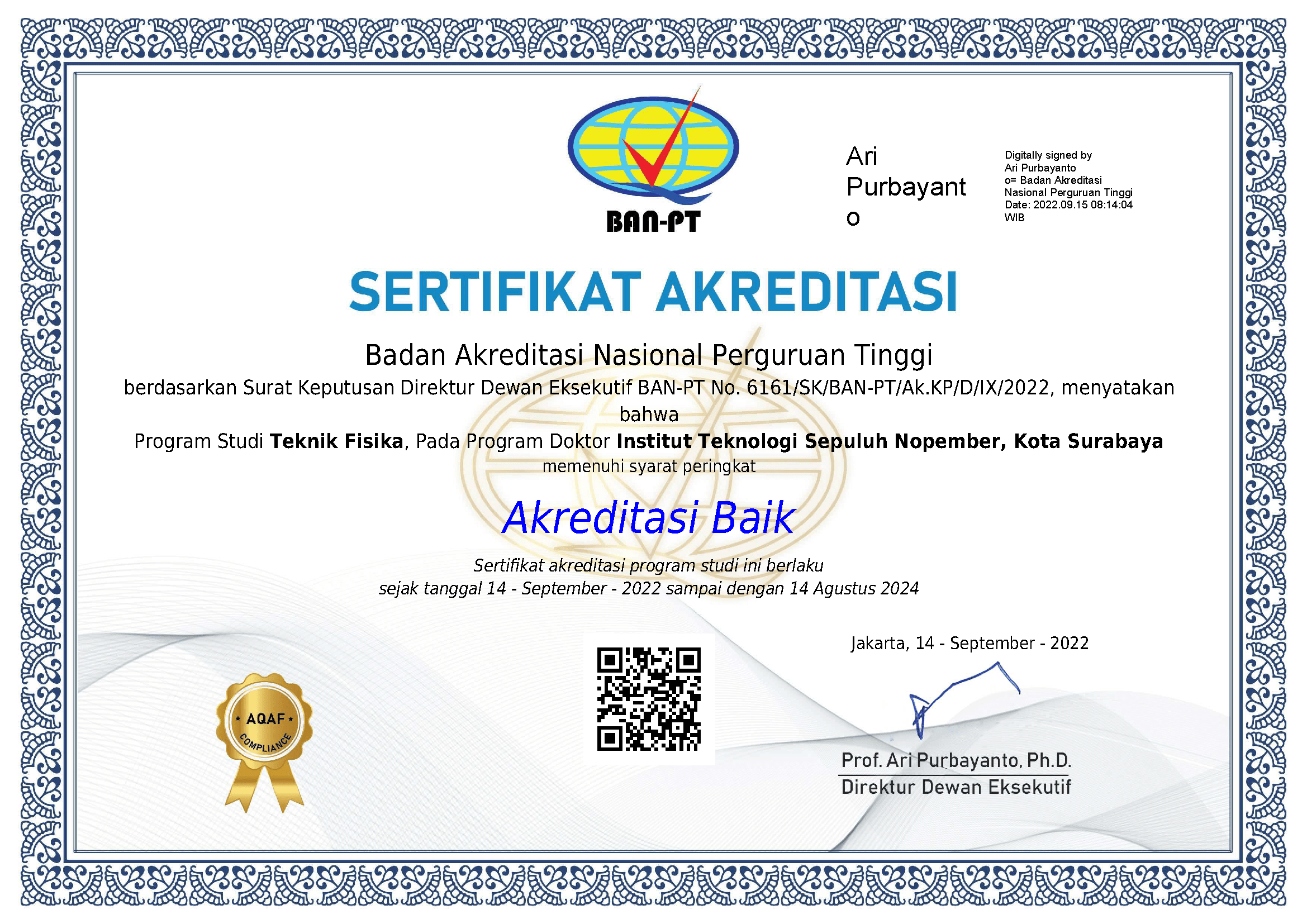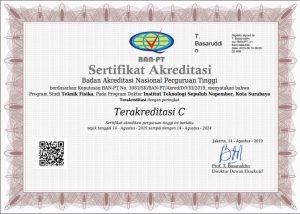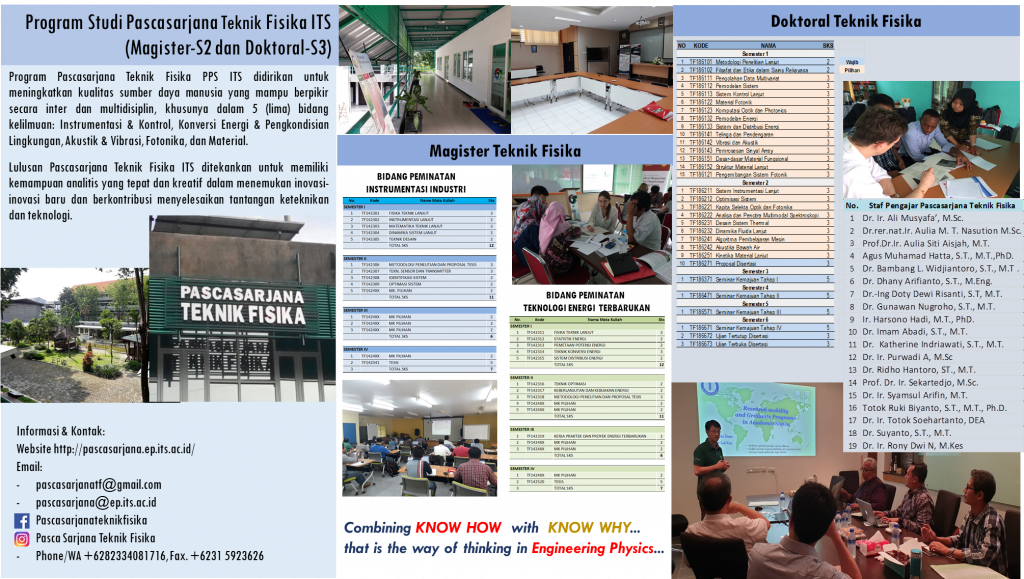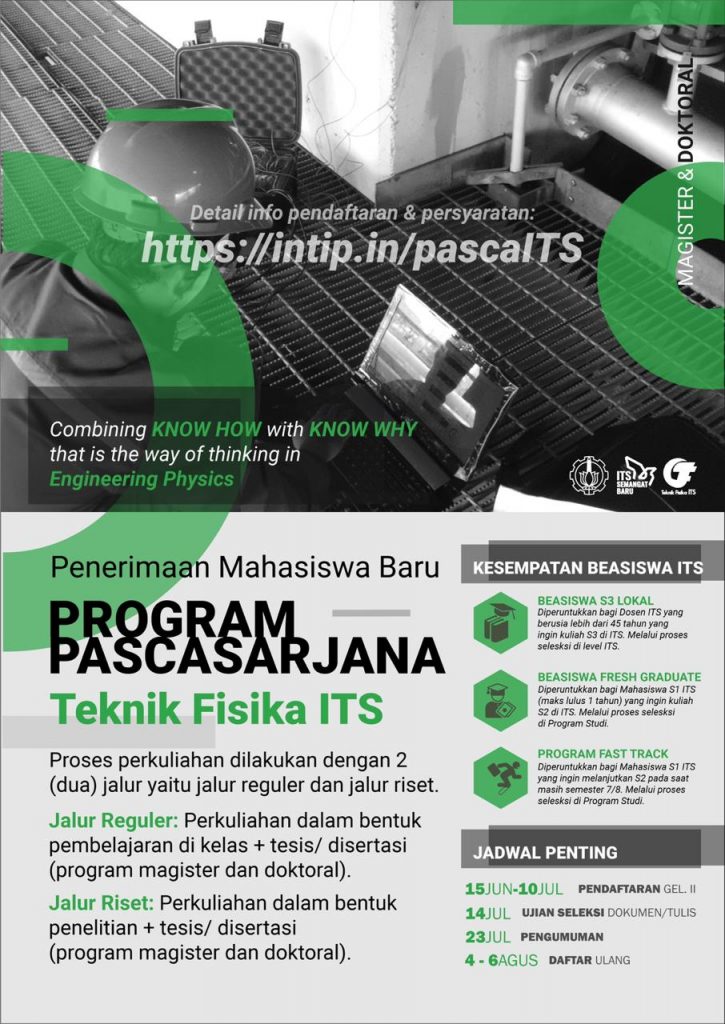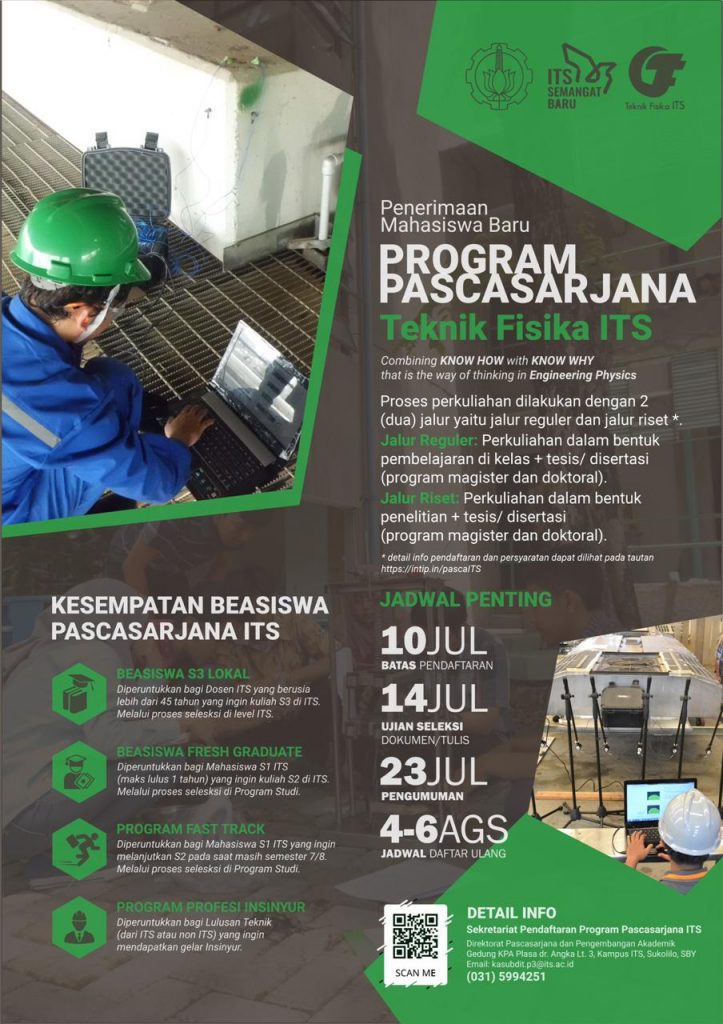Vision
Toward a Doctoral Study Program in the field of Engineering Physics that is superior and has an international reputation.
Mission
- Carry out high-quality doctoral education (S3) in the field of Engineering Physics;
- Conduct research characterized by:
a) The application of physics-based engineering to answer the challenges of the needs of science and technology in national development;
b) The anticipation of global trends in the development of the latest science and technology through superior innovation; and
c) Ability to compete (in a healthy, elegant, and uphold high academic ethics) with other foreign peers in the development of the latest specific scientific fields, which are the focus of development as planned. - Conduct community service to help solve problems nationally in the interdisciplinary field;
- Implement doctoral education management in an effective, efficient and accountable manner, and disseminating all management results in tridharma.
Objectives
Based on the vision and mission formulated above, the objectives of the doctoral study program can be written as follows:
- Develop the scientific field of Engineering Physics through educational and research activities, by optimizing the availability of existing resources and the formation of academic and research collaborative networks with other institutions in the same field, at the national, regional and international levels;
- Produce high quality and international reputation scientific works and actively carry out their dissemination activities, and are able to translate the results of these research into the form of technology implementation which is feasible in terms of technical and economic aspects;
- Produce doctoral graduates in the field of Engineering Physics who have a strong foundation of mastery of the latest in science and technology with sharp analytical skills based on Engineering Physics and its derivatives, and have ethics as academics. These graduates must be able to play an active role in efforts to strengthen national competitiveness in the current time.
